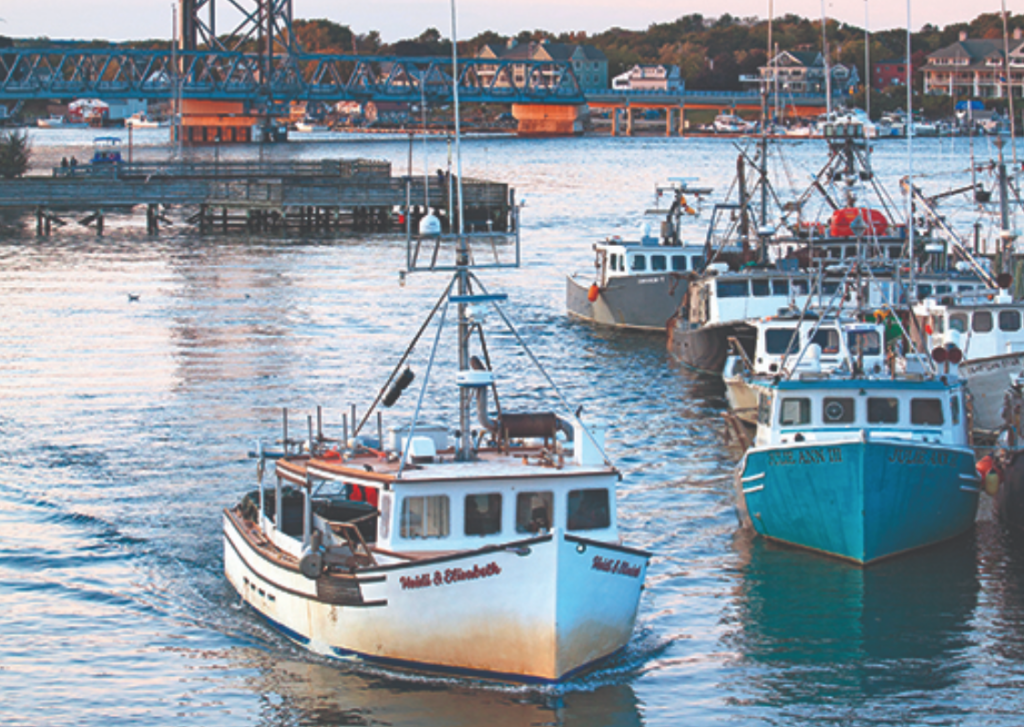Harvesting fish from the sea is a human activity as old as recorded history.
Fishermen have long epitomized the image of hardy individuals, free to make their living at sea. But this freedom is facing increasing restrictions as U.S. oceans become the focus of multiple, sometimes incompatible uses, with fishermen too often pushed to the side. One major culprit is the misuse of the Antiquities Act to designate sprawling marine protected areas.
Since 1976, with the passage of the Magnuson-Stevens Act, the federal government has had exclusive jurisdiction over our 200-nautical-mile exclusive economic zone, covering approximately 4.42 million square miles (exceeding that of the entire U.S. landmass at approximately 3.79 million square miles). Magnuson codified international boundaries and established a structure for stewardship of marine resources, namely the regional fishery management councils.
These regional councils (one of which — the Mid-Atlantic Fishery Management Council — I served on as an appointed member for Virginia, 2016-19) are tasked with managing fish stocks in a sustainable manner, with each geographic region facing unique challenges.
But managing fisheries is no longer simply about Magnuson’s directives to “conserve and manage” a sustainable resource to serve the “social and economic needs of the States.” It is about managing fisheries in a changing landscape of competition for ocean resources, where the environment is changing faster than in living history, and species footprints are on the move.
Part of this changing landscape is the creation of large, no-take MPAs, like the Northeast Canyons and Seamounts Monument off the coast of Cape Cod. Designated by President Obama with the sweep of a pen using the Antiquities Act of 1906, the 4,913 square miles of the monument are now managed by multiple federal agencies under a bewildering patchwork of legislation, including Magnuson, the Endangered Species Act, the Marine Mammal Protection Act, the National Wildlife Refuge System Administration Act, the Refuge Recreation Act, Public Law 98-532, and Executive Order 6166. Then there is the National Marine Sanctuaries Act, through which the government can designate and protect marine areas of national significance.
This plethora of confusing legislation lacks uniform definitions. It is not clear on how — or even if — MPA designations are required to be revisited, even when species move. In addition, it does not state who has precedent over whom in the management hierarchy.
Even as questions remain over existing MPAs, activists are pushing for more with a “30x30” campaign to protect 30 percent of our nation’s land, inland waters and oceans as conservation areas by 2030. But what is “protected” in this context? Is a region protected only by excluding fishermen through a no-take MPA? Or does the Magnuson Act directive to “conserve and manage the fishery resources” and “exercise sound judgment in [their] stewardship” rise to the level of protection? If so, then is not the entire exclusive economic zone already protected?
MPAs are far from the only competition fishermen are facing in the ocean. Environmental advocacy, communications corridors, mining, national defense, and shipping all threaten fishermen’s access to ocean resources. Perhaps the biggest incursion of all is offshore wind development: the U.S. East Coast continental shelf already has 1.7 million acres of federal bottom under lease for offshore wind, with the Biden administration seemingly poised to expand such efforts along the Atlantic, Pacific and Gulf coasts. Offshore wind projects have a projected lifespan of 50 years, with turbine spacing restricting access for both commercial fishing vessels towing mobile gear and federal survey vessels. Stock assessment surveys will be compromised, resulting in reduced quotas for fishermen.
With so many competitors muscling their way into the ocean, who will be the winners and losers? Over what time frames will winners emerge? Where does preservation of the fishing industry sit in the pecking order? At the bottom?
The “space” for fisheries is shrinking. Commercial fishing won’t be the largest economic player as development of our oceans continues, but it is historically an important part of the economic and social structure of coastal communities. Fisheries are based on moving species distributions that do not function well within fixed boundaries, like those being zoned for MPAs and offshore wind.
MPAs, and by extension a 30x30 plan that would create expansive no-take zones for fishermen, are a poor way to manage our oceans and the competing interests that will define their future. As the complex ocean landscape changes, the way to achieve the best possible outcome for the ecosystem and all ocean users is through management processes, like the regional fishery management councils, that were designed to deal with their complexity. The councils must be allowed to continue managing a sustainable fishing industry that contributes to food security and supports coastal communities.
Dr. Roger Mann is a professor of Marine Science at the College of William and Mary’s Virginia Institute of Marine Science.
This op-ed is based on an article published by the Journal of Shellfish Research. The full story, “An Ecosystem is Not a Monument, and Other Challenges to Fishing in the 21st Century,” is based on a talk Dr. Roger Mann gave at the annual meeting of the National Shellfisheries Association.







